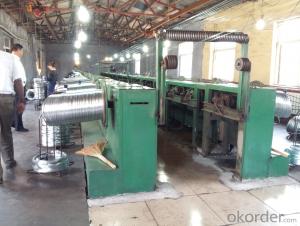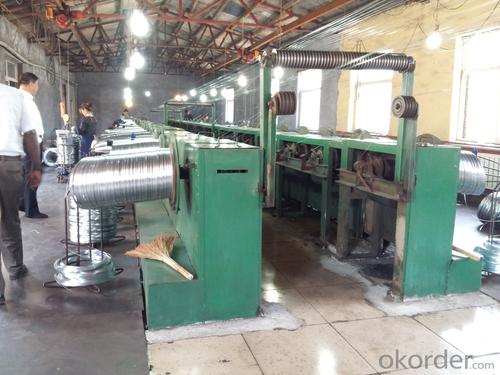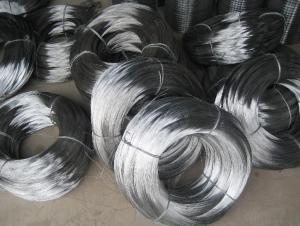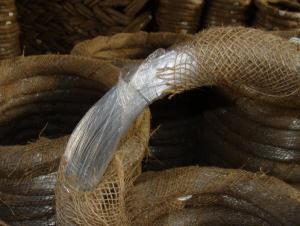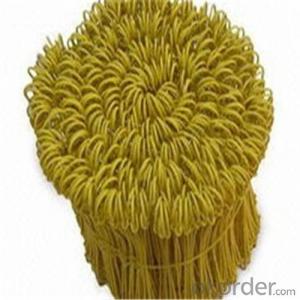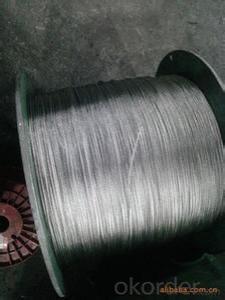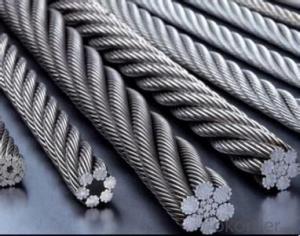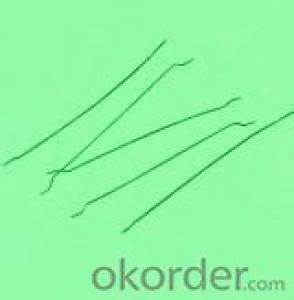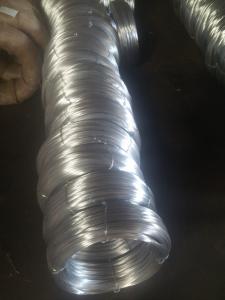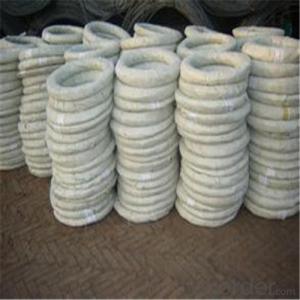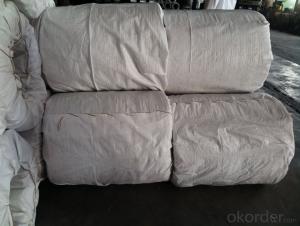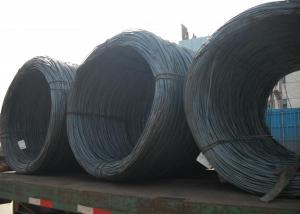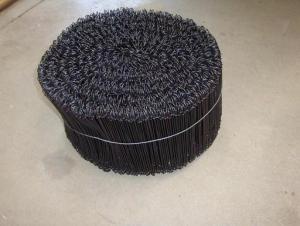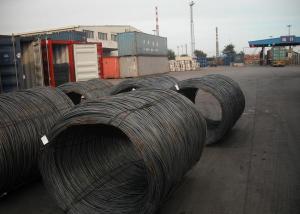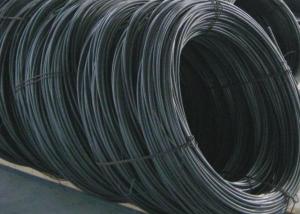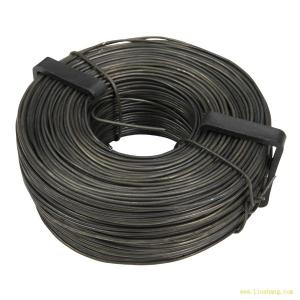1.75mm Hot Dipped Galvanised Steel Wires
- Loading Port:
- Tianjin
- Payment Terms:
- TT OR LC
- Min Order Qty:
- 10 m.t.
- Supply Capability:
- 1000 m.t./month
OKorder Service Pledge
OKorder Financial Service
You Might Also Like
Commercial Galvanised Steel Wire
(1) Quality : Meet GB/T 343 standard and other requirements of relevant standards .
(2) Zinc Coating: Meet GB/T 15393 standard and other requirements of relevant standards .
(3) Raw Material : Wire rod ——1006 , 1008 , 1018 , Q195 , etc, and zinc with 99.995% purity.
(4) Tensile Strength Range
Size (mm) | Tensile Strength (mpa) |
0.15-1.60 | 290-550 |
0.65-1.60 | 400-550 |
1.61-6.00 | 400-1200 |
(5) Application : Used in wire mesh , artware , metal hose , binding for agriculture and construction , etc.
(6) Packing
Size (mm) | Coil Size | Spool Packing | Big Coil Packing | |
ID (mm) | OD (mm) | |||
0.15-0.26 | 6 inch | 1-14kg/spool | ||
0.27-0.60 | 8 inch | 1-100kg/spool | ||
0.61-1.60 | 12/14/16 inch | 1-100kg/spool | 250-400 | 400-770 |
1.61-6.00 | 14-500kg/spool | 450 | 800 | |
508 | 840 | |||
(7) Zinc Coating
Meet GB/T 15393 standard.
Size (mm) | Weight of Zinc-Coating ( g/m2 ) | |||||||
A | AB | B | C | D | E | F | ||
A1 | B2 | |||||||
≤0.25 | 30 | 20 | 18 | |||||
>0.25-0.40 | 30 | 25 | 20 | |||||
>0.40-0.50 | 30 | 20 | ||||||
>0.50-0.60 | 35 | 20 | ||||||
>0.60-0.80 | 120 | 110 | 40 | 20 | ||||
>0.80-1.00 | 150 | 130 | 45 | 25 | ||||
>1.00-1.20 | 180 | 150 | 50 | 25 | ||||
>1.20-1.40 | 200 | 160 | 50 | 25 | ||||
>1.40-1.60 | 220 | 180 | 50 | 35 | 30 | |||
>1.60-1.80 | 220 | 180 | 70 | 40 | 30 | |||
>1.80-2.20 | 230 | 200 | 80 | 50 | 40 | |||
>2.20-2.50 | 240 | 210 | 80 | 55 | 40 | |||
>2.50-3.00 | 250 | 230 | 90 | 70 | 45 | |||
>3.00-4.00 | 270 | 250 | 100 | 85 | 60 | 30 | ||
>4.00-5.20 | 290 | 270 | 110 | 95 | 70 | 40 | ||
>5.20-6.00 | 290 | 270 | 245 | 110 | 100 | 80 | 50 | |
- Q: so im lost in how i should wire my subs. I have two subs that i need to wire both are 2 ohms 400 watts i don't know if i should wire them parallel or series if you can help me out that would be great!
- usually all sub wiring is the same, youll have the rca cables and antenna wire comming from the radio to the amp, power and ground wire going from amp to battery and ground, and than should have 2 wires coming off each sub to the amp, im guessing thatd be parallel, if you wire in series, so like use 2 wires and splice off to each sub, so 2 wires off the amp powering each sub you would up the ohms and put a too much of a load on the amp, people only wire in series when they have too many subs and not enough outlets on the amp, good luck
- Q: I'm replacing the door speakers in a 2001 Coupe Camaro with the factory sound system. I needed to know which wire was positive and which was negative so I bought a circuit tester. However, I keep getting the reading that both wires are positive. What could be causing this? I know the circuit tester works because I tested it on the battery terminals and it worked fine.
- You cannot use a circuit tester on speaker wires. It is not the correct tester. All you have to do is look at factory speaker it's marked positive and negative.
- Q: the charger has three wires to put a male plug on and they are black white and green and they look like 12 gauge wires
- wire colors are green is ground the black and white wires are you load wires look at you 240 volt plug and determine which terminal is the ground this one is where the green wire goes the black and white wire go to other two terminals this should do it
- Q: Our house ground wire is very long but our live and natural wires are very short. Once there was a surge in our telephone line system and both my Belkin Surge Protectors seemed to have not stopped it. The surge was stopped at my last protector when its sensitive fuse blew (it was a 10 ohm resistor fuse). Is it possible that since the natural wire is shorter than the ground wire the surge wantted to go through my PC and into the natural wire? Or is it just because the 10 ohm resistor fuse was a bit too sensitive or something? (Well it didn't blow up when there was no lightning outside)I'm thinking of making my natural wire longer by extending it so a surge finds the ground wire more attractive, is this advice able?
- Your ground wire should go to your breaker box, then to a ground rod or some other good ground point with a large #6 solid wire. I don't understand why your ground wire should be substantially longer than your neutral or hot wires. Making your neutral wire longer would probably have little effect. You could also have a poor connection in your ground wiring. Maybe some corrosion has accumulated somewhere. A surge protector can't operate correctly without a good ground. It sounds like you should have an electrician check your electrical system. This could save you money in the long run.
- Q: chicken wire mesh
- you live near a river it will make one fine fish trap round or oval 2 feet in dia.and 4 feet long .let me know and I will tell you how to naturaly bait the trap
- Q: How do electric and other companies decide on strung wires in consideration of snowfall?
- Snowfall is nothing...even birds on a wire add more weight than that. And like BillRussel said, the core is a steel wire for tensile strength that will handle the biggest force which is wind. Since electricity flows around outside a conductor better than going thru the core, it makes sense for them to surround the steel core with a lightweight , cheap, conductor like aluminum which only has to worry about conducting current and not with strength issues.
- Q: What's the best kind of wire to use that can stand being kilned?
- that really depends what you want to do and how high you are going to fire. Generally nichrome 80/20 wire should be OK until cone 9. Then there is Kanthal which will withstand even higher temperatures but is more expensive than nichrome. You could get either probably in electronics supply houses. If you do lowfire, maybe up to cone 06 or lower steel will probably be OK. The surface of the steel will oxidise and so get clearly thinner, keep that in mind. Generally your wire and the clay should not be in direct contact because they have different thermal expansion coefficients. Depends how rigid your wire is if it will lead to major damage to your piece. But if you wrap your wire with paper before you put clay around it it is probably OK as long as you don't enclose the entire thing with clay into a hollow space. But it also depends on what exactly you are trying to do, e.g. what kind of clay you are using. Mostly people use wire with clay for making beads. If that's what you are doing you can also look up bead making techniques.
- Q: I recently bought a stereo for my truck. What is a good average gage for a ground wire? Speaker wire? Power wire? Last but not least a speaker control (remote) wire? If it helps, I am running a 760 watt pioneer amp on two 12 inch subs. Thanks
- 1 0 Ofc Wire
- Q: I have just started wire working to make bracelets. I have a few questions. 1, is there a place where I can buy thick wire (16 to 18 gauge) in bulk? The items I am making take about a yard of wire. Considering the only thing I could find was 16 (or slightly hire) gauge in 7 foot increments. For new wire workers, do you have any suggestions on cheap practice materials. Also for those things that don't turn out great, what do you guys do with them?
- For okorder /
- Q: my questions is what wires go where. i just bought a Hunter thermostat model # 44155c. on my old thermostat the wires are as followes:W2-jumps to quot;F(Yellow Wire)F-Yellow WireO/B-Light Green WireR-Red WireG-Dark GreenC-Red Wire Y-Yellow WireMy new thermostat has these options:RH, RC, G, Y/O, W/B, Y1can anyone tell me what wires go where?thank you
- Well, unfortunately, this particular Hunter model isn't well-designed for operating heat pumps, which is what I'm assuming you've got, since you've got a W2 (aux heat) wire and and O/B (compressor reversal) wire. Still, you can sorta get it to work, but it might take some trial and error, when it comes to the O/B wire, as I'll explain in a minute. Here's the connections you should make: RH - 24VAC hot - connect to R wire RC - 24VAC cool - Jumper this to the RH connector G - Fan - connect to G wire Y - Compressor - connect to Y1 The O/B wire should connect to EITHER the Y/O or W/B, depending on your heat pump. If the reversing valve of the pump is supposed to operate when it heating mode, then you connect to the W/B terminal. If the reversing valve operates in cooling mode, you connect to the Y/O terminal. The other wires should be taped off with electrical tape and left disconnected. These wires are: W2 - auxiliary heat control - leave disconnected (your thermostat can't activate auxiliary heat) F - not sure what this is, to be honest; it might be for controlling a thermostat system check LED C - 24VAC common. Your thermostat doesn't need it.
Send your message to us
1.75mm Hot Dipped Galvanised Steel Wires
- Loading Port:
- Tianjin
- Payment Terms:
- TT OR LC
- Min Order Qty:
- 10 m.t.
- Supply Capability:
- 1000 m.t./month
OKorder Service Pledge
OKorder Financial Service
Similar products
Hot products
Hot Searches
Related keywords
